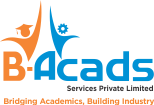Industry needs fresh Graduates/Post-graduates to fulfill their manpower requirements. They need to attract the best talent and talent comes at a price. The price they pay for this talent is again the CTC offered. They want to attract the brightest students at the CTC decided by them, so they become the sellers, and students/institutes become the buyers.
Everyone wants to be a buyer, as there is a general belief that buyers can dictate their terms and have better bargaining power. In the above scenario, who is a buyer and who is a seller?
Everyone wants to be a buyer, as there is a general belief that buyers can dictate their terms and have better bargaining power. In the above scenario, who is a buyer and who is a seller?
The answer is the one with a strong offering is a buyer. If a company offers a good profile coupled with a good package, they become buyers as they get to choose the right candidate. However, if the student has sharp skills, right attitude and good knowledge he is in the buyer’s seat. So your value is decided by what you bring to the table, be it the companies or the institute.
Students are at the core of this situation. Academic Institutes aim to ensure that their students are ‘employable’. This improved ‘employability’ is a boon for the industry as it translates into better output from the newly joined employees and lesser training costs.
In other words, both Industry and Academics have the same goals. Despite this, the interaction level between academics and Industry is quite low in most management institutes. The outcome of this limited interaction are reports that question the employability of management students.
World Economic Forum in its report in 2019, 13 million youngsters join the workforce and only one in four management graduates are employable.
India Skills Report 2023, acknowledges that MBA is amongst the most sought after course by employers and despite that its employability is only 60%.
This means that 40% of the MBA graduates are unemployable. The report of the World Economic Forum offers a two-pronged solution to improve employability. One is developing a skill-based curriculum, and the second is bringing industry into the classroom.
Industry can give feedback to Academics on the areas where they feel the students are lacking. However, this alone is not sufficient. Industry needs to partner with Academic Institutes and plan ways to bridge this gap effectively.
The performance of today's students and tomorrow's managers is critical for this to be a win-win for both Industry and academia. If students have the suitable skill set and knowledge coupled with a positive attitude, the industry would be willing to offer them a more responsible profile and a higher salary. This is precisely the desire of every institute offering a management program, viz., ‘employable’ graduates.
To achieve this common goal, industries and academics need to collaborate.
- This crucial job of imparting knowledge and skills cannot be
entirely the responsibility of the faculty of that institute. Faculty
may not have expertise in all sectors of business or all functions
of a department.
- The demands of the banking industry are very different from
those of a leading FMCG or an engineering company. An
institute will struggle to get all expertise under one roof.
- The field of business is dynamic; though the core concepts
don’t change too often, their applications and relevance are
bound to change. This is where Industry needs to collaborate
and fill the gaps.
Challenging times demand innovative solutions.
Industry's association with academic institutes need not be only at an organizational level. As an individual with reasonable corporate experience, you can make a difference and bridge this gap. You can impart knowledge to students, guide institutes in developing skill-based programs, mentor students, and, in many other ways, associate yourself with the academic world.
The industry's contribution will not only help students and academic institutes but will also improve the quality of students seeking jobs in specific industries. This would mean less training and a higher chance of the students delivering the desired results upon joining the organization.
What are your thoughts on the current state of industry-academia collaboration? Share your comments below!
If you are passionate about contributing to bridging this gap and want to make a difference










